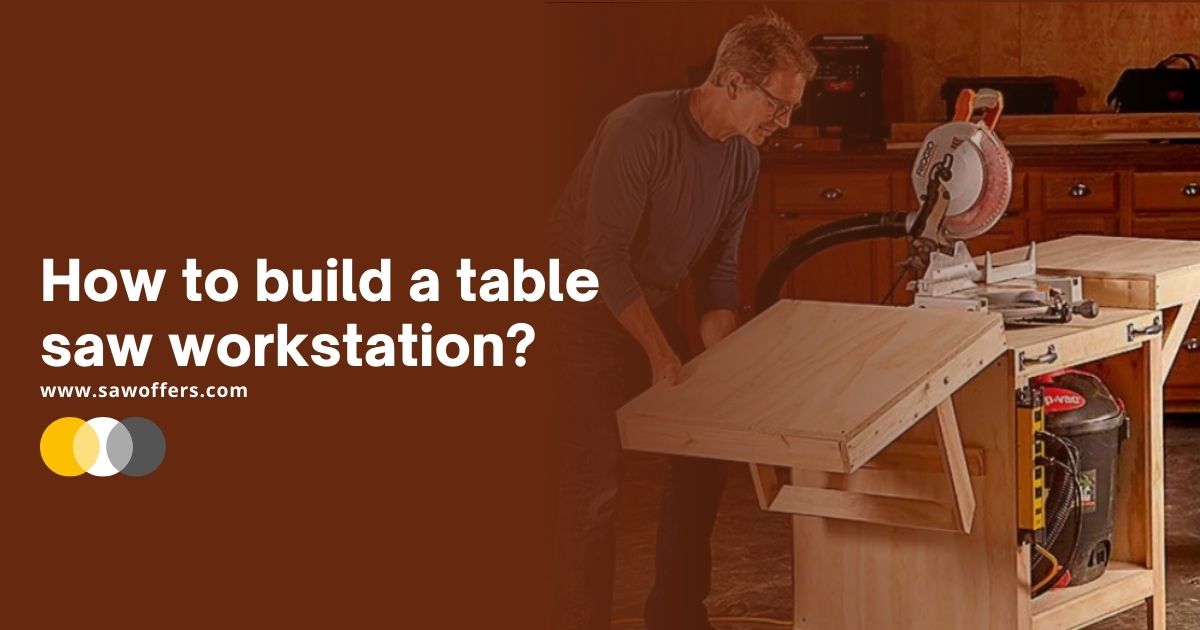Table of Contents
Building a workstation isn’t something that can be done quickly or easily, but once you get started you’ll be able to create a workspace for your table saw that will make the process much easier and more efficient.
Building a table saw workstation is one of the best ways to build the confidence you need to cut wood. It’s great practice and makes you more comfortable with your ability to work safely in the shop. But buying a quality saw isn’t cheap, and the cost can add up quickly.
Luckily, we’ve created a guide to building a table saw workstation using common materials that won’t break the bank. We’ll tell you what parts you’ll need, how to measure them accurately, and how to put them together. This guide will make it easier to get started with your new workspace. You’re almost done! Just a few more steps and you’ll have a functional and beautiful table saw workstation.
Things You Need know
There are lots of different tools you need to build a quality table saw workstation. You’ll need a table saw, a miter gauge, a rip fence, a guide to show the height of cuts, a bench vise, a router, a jig or bit holder, a circular saw, and a miter saw, a framing square, and a hand sander.
Step 1: Prepping Your Workspace
Prepping your workspace is the first important step to getting started. Most importantly, make sure you’re in a place where you can focus for the entire time you need to work. While some people prefer working in an environment that’s noisy, others find a quiet space distracting. The best thing to do is try both ways out for a while to see what works best for you.
Another thing you should keep in mind is your desk. There are lots of different kinds of desks out there. Which one you choose depends on your situation and personality. If you work alone, you can choose a small, comfortable desk for a quick, casual workday. If you like to work with others, a large, sturdy desk is better suited.
Step 2: Choosing the Right Table Saw
Next, you’ll need to choose the right table saw. If you’re building a smaller shop, there are many different types of table saws on the market. Choose one with the most accurate settings, including the fence. Be sure to check out our table saw guide for tips on choosing and using the perfect table saw for your small shop.
Step 3: Gluing and Assembling the Top
The third step involves gluing and assembling the top to the base. While this process is fairly simple, it requires some patience and skill. Once the table saw top is securely glued to the base, all that remains to finish the workbench is to sand, stain, and paint the benchtop. To accomplish this, you need to use fine-grit sandpaper, such as a 180- or 240-grit pad. If you’d prefer to paint the benchtop, use a spray-can adhesive sealer, such as Zinsser’s Super Floor Sealer.
Step 4: Gluing and Assembling the Legs
The next step is gluing and assembling the legs. Using clamps, glue the legs together. Clamp one of the legs in place, and then attach the other one. Make sure to get the inside surfaces glued because you don’t want to have gaps where the glue isn’t holding. Once both legs are glued and clamped in place, cut off any excess wood. The legs should be glued and clamped in place for stability. Cut out the remaining pieces for the tabletop using a jigsaw. You can also use a circular saw to cut out the larger pieces.
Step 5: Finishing the Base
The next step to build the table saw workstation is to finish off the base, which is comprised of four pieces: the base plate, the four legs, and the feet. After assembling all the parts, you’ll need to apply a finishing coat of paint to cover up any imperfections you may have created during assembly.
Step 6: Installing Drawers
Drawers are a very useful addition to a table saw workbench. A drawer provides a space to store small tools, such as a power drill, screwdrivers, hand saws, and other small hand tools. Most drawers are installed directly underneath the workbench. One downside to a drawer is that there isn’t room to store larger tools such as large bits and saws. Instead, I recommend storing them on shelves on either side of the workbench.
Step 7: Adding T-Track, Fence, and Kreg Jig
The last of the seven steps in building a table saw workstation involves adding the T-track, fence, and Kreg jig. To add the T-track, first cut the two pieces of wood to length. Once you have the pieces cut to length, glue the bottom piece to the base using Gorilla Super Glue. Add screws to the base to hold the track together while the glue dries. Once the glue dries, attach the track to the base with the remaining screw holes. Then attach the fence to the T-track using screws. Next, attach the Kreg jig with screws.
Conclusion
In conclusion, it’s important to remember that the table saw is not just a tool. It’s also a piece of equipment that needs to be maintained and serviced. As such, the table saw workstation should be designed to help you maintain your table saw efficiently and effectively. This includes making sure that the table saw is properly set up for the job at hand, that there is enough space for you to work comfortably, and that the tools you need are easily accessible.

